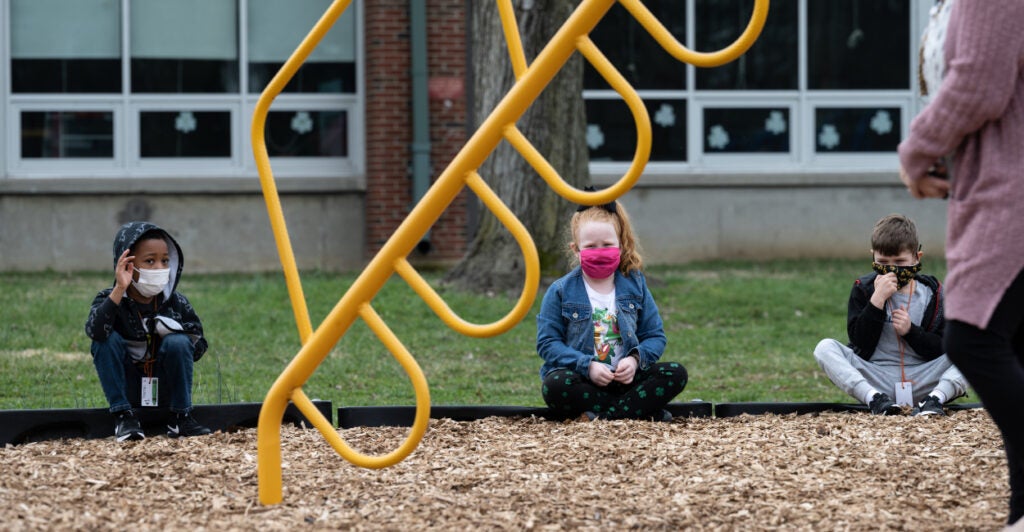As more schools around the country move toward reopening, the Centers for Disease Control and Prevention revised its guidance Friday, saying that K-12 students may sit 3 feet apart instead of 6 feet—as long as they wear masks.
That’s regardless of whether the children are in “areas of low, moderate, or substantial community transmission” of the COVID-19 virus, the CDC said.
The previous COVID-19 guidelines of 6 feet of social distancing limited how many students some schools could teach in person. Some schools had to remove desks, provide flexible schedules, and seat students one child per row on buses to accommodate those guidelines.
Some schools also had to stop using lockers and remake schedules for when different grades could move through the halls, where maintaining any distance at all can be difficult.
The CDC said it still recommends at least 6 feet of distance between adults in schools and between adults and students.
The agency’s newest guidance comes a week after it said that children as young as 2 years old in day care should wear masks, “even after child care providers and staff are vaccinated” against COVID-19—despite studies showing that children contract the virus at far lower rates compared with adults.
In its March 12 update, the CDC also urged that each child’s toys at day care facilities be kept separate. “Do not share toys with other groups of infants or toddlers, unless they are washed and sanitized before being moved from one group to the other,” it said.
>>> What’s the best way for America to reopen and return to business? The National Coronavirus Recovery Commission, a project of The Heritage Foundation, assembled America’s top thinkers to figure that out. So far, it has made more than 260 recommendations. Learn more here.
Despite outdoor activities being safer than those indoors, the CDC also said that jungle gyms, swing sets, tricycles, and the like “pose a risk for spreading COVID-19.”
“Stagger your use of playgrounds and play spaces by reducing the group size in the play area at one time or remaining in cohorted groups while sanitizing shared objects and high-touch surfaces between groups,” the CDC said, adding that children should be separated—using fences, if necessary—into smaller groups.
The March 12 guidance conflicted in at least one respect with the CDC’s prior statements about vaccines. The CDC had said previously that all vaccines available in the United States are “highly effective at preventing COVID-19,” while the later report said that even if an adult is vaccinated, he or she would still need to wear a mask.
The CDC has told Americans “that vaccines are ‘efficacious and effective’ against ‘asymptomatic infection’ and that they ‘substantially reduce’ transmission risk,” said Doug Badger, a visiting fellow in domestic policy studies at The Heritage Foundation with expertise in public health.
“Cases among preschool children are rare, serious cases are rarer still, and studies show that children under 10 are unlikely to infect family members,” Badger said. “The risk of transmission is not zero, but it is low.”
“Applying severe restrictions to immunized people poses a greater public health risk—that people will refuse vaccinations,” he said.
Have an opinion about this article? To sound off, please email letters@DailySignal.com and we will consider publishing your remarks in our regular “We Hear You” feature.
